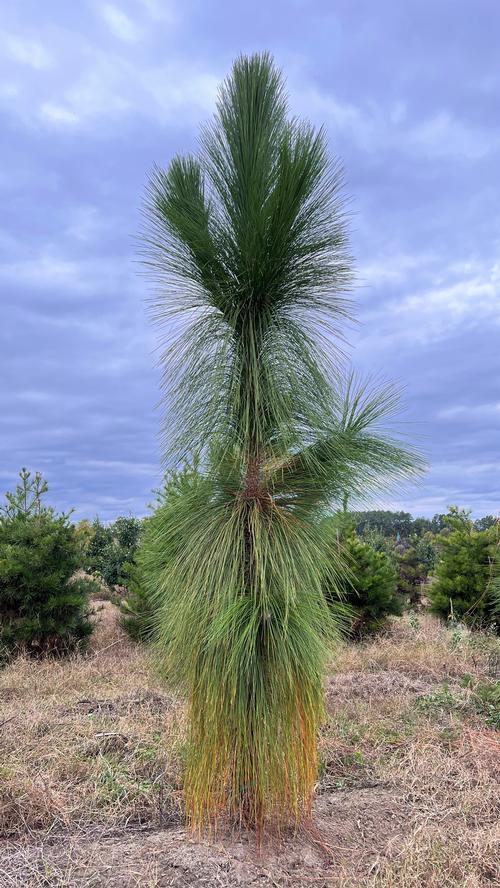Pinus palustris
Longleaf Pine (Long Needle Pine)
The longleaf pine is a large evergreen tree that can reach heights of 80 to 100 feet or even taller though it normally grows 60' tall in landscape situations. It has a straight trunk with reddish-brown bark that becomes deeply furrowed as the tree matures. The needles are long, measuring around 8 to 18" in length, and are typically found in bundles of three. This pine is unique because of the grass stage when seedlings produce dense, long, spreading needle bundles but the tree does not grow much in height.
The tree produces both a purple-blue male cone and a dark purple female cone. The cones are the largest of any pine in eastern North America. Longleaf Pines have a slow to moderate growth rate and can live for several hundred years. They have long taproots, which help them withstand drought and fire.
This plant supports Imperial Moths and provides winter cover for birds and wildlife. Fox and gray squirrels, quail, brown-headed nuthatches, mourning doves, and turkeys eat the seeds. Red-cockaded woodpeckers nest in tree cavities.
Use as a specimen or in mass plantings, naturalized areas, coastal areas, or as a shade tree.
- Iconic native pine good for naturalizing
- Some consider in the state tree of NC
- Important wildlife food source
- Category:
Tree,
Native
- Hardiness Zone: 7-9
- Height: 60-100 ft
- Spread: 20-30 ft
- Foliage Color:
Green
Login for pricing


